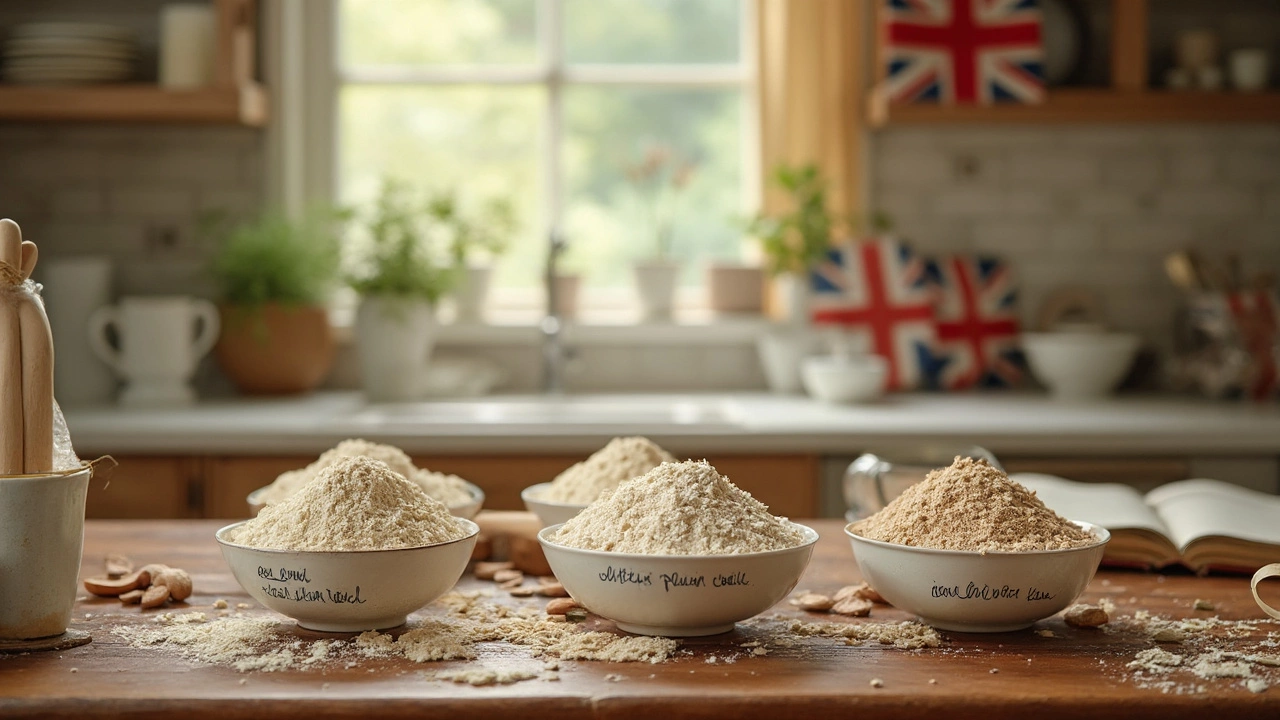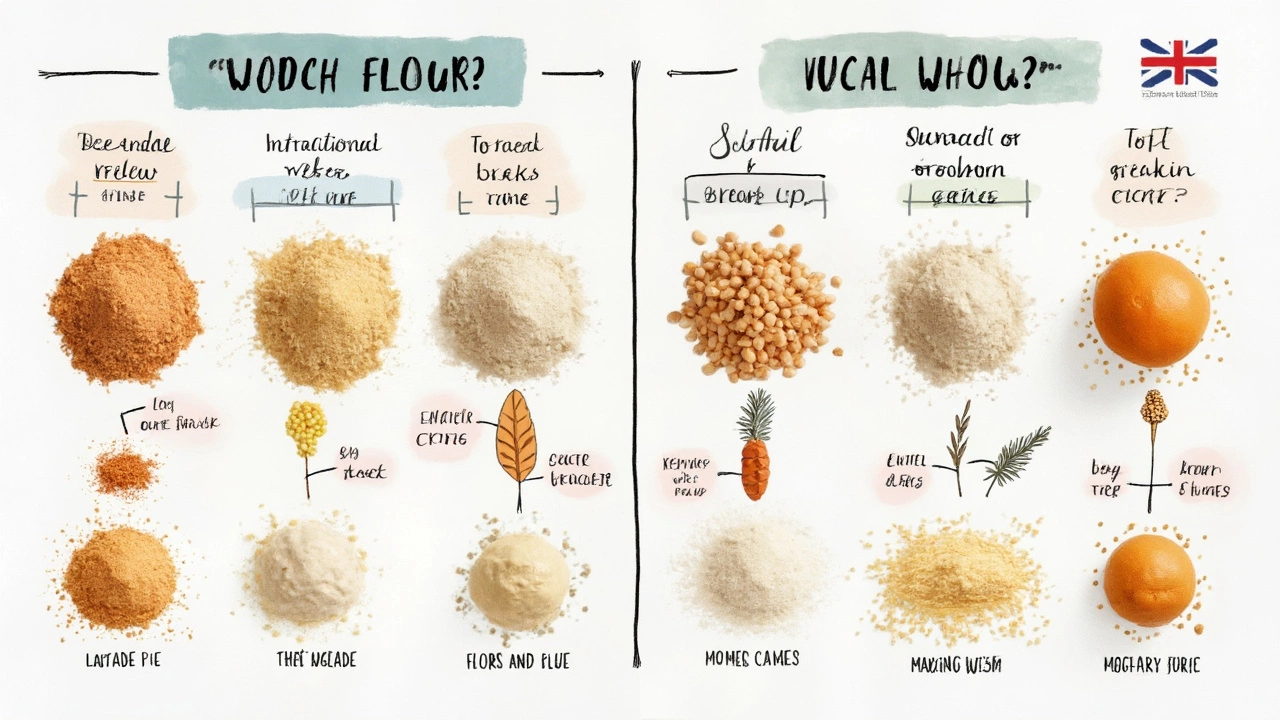
Ever tried baking your favorite bread only to realize the recipe calls for gluten flour and you can't use it? Trust me, I've been there, staring down a half-mixed bowl of dough with Smokey meowing for a treat. Whether you’re gluten-intolerant, have celiac disease, or just want to experiment with different flours, knowing the best substitute for gluten flour can save your recipe and your sanity. There are great options out there—some deliver awesome chewiness in bread, others keep your cakes tender and light. But swapping isn’t as simple as scooping out a cup of white stuff and calling it a day. Substitutes come with quirks, hacks, and unexpected benefits. Let’s sort through the best substitutes so you can pick the right one for whatever you’ve got in your mixing bowl.
The Science of Gluten: Why Substituting Isn’t Straightforward
Gluten acts like culinary magic glue. It’s a combo of two proteins—gliadin and glutenin—found in wheat and a few other grains. Once you add water and start mixing, they hook up and create stretchy, elastic strands. That’s why pizza dough can be tossed around or why sourdough gets its chewy bite. The elasticity traps gases that yeast produces, so your bread rises and holds shape instead of collapsing. So when recipes ask for “vital wheat gluten” or “gluten flour,” they’re asking for this protein magic. Trouble is, no single gluten-free ingredient does everything gluten can. Most need a bit of backup.
Even gluten-adjacent flours like spelt or barley won’t work for those with celiac disease, because they still contain those pesky proteins. Gluten’s unique texture also adds shelf life, keeps baked goods tender, and prevents dryness—that’s a tall order for substitutes. Plus, gluten is flavorless, so replacements shouldn’t overwhelm your dish. That’s where things like xanthan gum or psyllium husk come in, and where you’ll want different choices for bread versus cake. A 2018 study from King’s College London actually measured the structure of dough with and without gluten and found that gluten substitutes often mimic texture but miss the mark on strength. So, you’ll need to adjust technique, measurements, or both. It’s possible, though; commercial gluten-free bakeries do it every day.
Top Gluten Flour Substitutes and How to Use Them
Alright, so what’s a baker to do? Here are your best gluten flour alternatives and how they stack up in real recipes. Each has its own set of powers (and weaknesses), so some work for crusty bread, others for cookies or pancakes.
- Gluten flour substitute blends: Commercial “all-purpose” gluten-free flours usually mix rice flour, potato starch, tapioca, and sometimes a dash of sorghum or even bean flours. These are designed to mimic wheat flour in cakes, cookies, pancakes, and muffins. The trick: they almost always need something else for structure—like xanthan gum, guar gum, or psyllium husk—since they have zero gluten and therefore no stretch.
- Almond flour: Made from finely ground blanched almonds, this stuff is a go-to for rich, moist bakes (think brownies or dense cakes). It’s protein-packed and adds a nutty flavor. You can’t use it alone to make bread rise like gluten flour, but paired with eggs or gums, it holds together well.
- Coconut flour: Absorbs tons of moisture—seriously, add more eggs if you use this one. Its fiber content is through the roof, and you only need a small amount. It’s best as part of a blend for cakes, muffins, or pancakes.
- Sorghum flour: Mild and slightly sweet, sorghum flour is closer in texture to wheat flour than many others. Breads and pancakes do well here, but again—mix it with other flours for best results.
- Chickpea flour: For savory baking or anything with a hint of earthiness, chickpea (or gram) flour is underrated. It’s high in protein but can taste a bit bean-y in some sweets. Use it in pizza bases, flatbreads, or even as a thickener.
- Tapioca starch and potato starch: Pure starches add chew and flexibility—not much taste, but great structure for gluten-free blends. Too much and your bake will turn gummy, so use sparingly.

Secret Weapons: Binders and Gums That Replace Gluten’s Structure
No getting around it—if you want chewy bread or stretch in your pizza crust, you need replacements for gluten’s structure. That’s where binders shine. Xanthan gum is the most common and is made by fermenting sugar with a special bacteria. It creates stickiness and flexibility, so gluten-free dough doesn’t fall apart. Guar gum (made from guar beans) is another cheap, easy-to-find option. Just remember, a tiny bit goes a long way—too much and the texture goes from chewy to jelly-like.
Psyllium husk (yes, the fiber supplement) is a rockstar for gluten-free bread. When mixed with water, it forms a gel that makes bread dough pliable and lets it rise more like traditional dough. Some folks mix chia seeds or flaxseed meal with water for a similar gel effect. If you ever look up gluten-free bread on Instagram and see gorgeous, sliceable loaves—that's probably thanks to a healthy scoop of psyllium husk.
Here’s a quick cheat sheet for replacing gluten’s binder effect:
- For each cup of gluten-free flour blend, add 1 tsp xanthan gum for cookies or cakes or 1.5 tsp for yeast breads.
- For psyllium husk, 1 to 2 tablespoons mixed with water for bread recipes works wonders.
- Chia and flaxseed gels replace eggs and add a structure boost (1 tbsp seeds + 3 tbsp water = 1 egg).
Baking and Cooking Tips for the Best Gluten-Free Results
Baking with gluten flour substitutes isn’t plug-and-play—your recipe will probably need a few tweaks. For one thing, gluten-free dough is usually stickier and wetter than regular wheat dough, which is normal. Don’t be tempted to add more flour; instead, trust the process and use a spoon dipped in water or lightly oiled hands to handle the dough.
If you want lighter, airier bakes, separate your eggs and whip the whites before folding them into the batter. This helps replace some of the lift lost by skipping gluten. For bread, letting the dough rest for 20 minutes before baking lets flours like rice and sorghum hydrate and yields better texture. Adding a teaspoon of apple cider vinegar or lemon juice to yeast breads helps with rise and sharpens flavor.
Don’t forget about flavor: gluten-free flours can taste bland or even a little gritty if underbaked. Toasting millet or almond flour in a dry skillet before mixing boosts flavor and helps with texture. And always check your flour labels carefully. Oat flour is naturally gluten-free, but many brands process it alongside wheat, so only pick ones labeled GF if you’re sensitive. Also, most gluten-free blends are lower in protein than wheat, so adding an extra egg or some yogurt can give your bakes more body and richness.
For thickening sauces, potato starch or cornstarch works well and won’t leave a weird taste. Experiment with small batches until you find your groove—the best substitute for gluten flour will depend on your taste buds, sensitivities, and what’s already in your pantry.

Pitfalls, Pro Tips, and Frequently Asked Questions
If you’re new to gluten-free baking, the biggest mistake is expecting a straight swap. One cup of wheat flour might equal a cup of all-purpose blend for basic cookies, but breads or delicate pastries need extra thought. The rise might be lower, or bakes could dry out faster. Freezing gluten-free baked goods can help keep them fresh, since most lack preservatives usually found in wheat products.
Don’t overbake—gluten-free treats often look underdone by sight alone but firm up as they cool. Moisture is your friend, so cover bakes with a damp cloth as they cool to avoid hard crusts. If you’re skipping not just gluten but other allergens (like nuts or soy), check ingredient lists for cross-contamination. Some substitutes (like coconut flour or almond flour) are high in fat and calories, so adjust if that matters to you.
If you’re diving into gluten-free for the first time, start with recipes made to be gluten-free, not just modified. You’ll avoid headaches and wasted ingredients. And talk to other bakers or gluten-free friends. There’s a wild community online that loves sharing what’s worked—and what’s failed spectacularly. For the super nerdy, weighing your flour instead of scooping is more accurate, since non-wheat flours settle differently in the bag.
If Smokey could bake (he can barely keep his nose out of the flour bin), I’m convinced he’d have a favorite blend by now. Until then, keep experimenting—the perfect gluten flour substitute for your kitchen is out there, and it’ll change the way you bake.